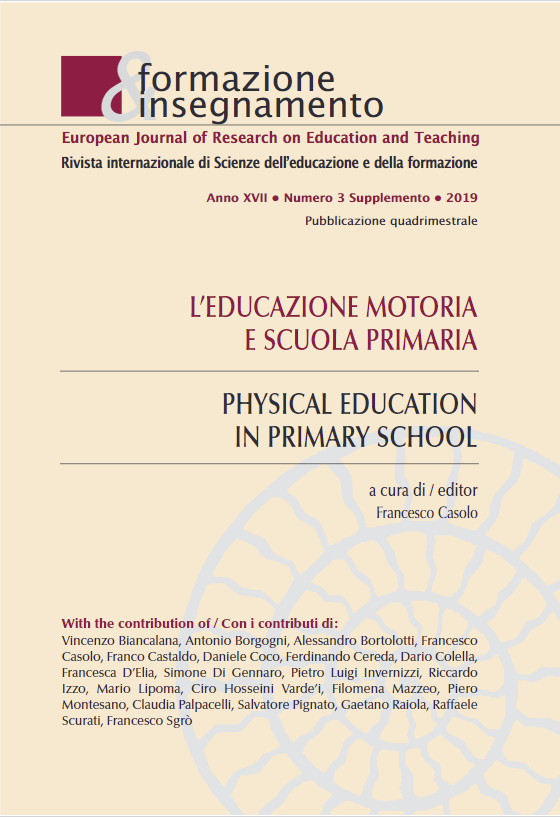The Decision Making Process based on the Attention, particularly on Team Sports to Avoid Perceptual Functional and Biomechanical Deficits for a Quality Sport Performance
DOI:
https://doi.org/10.7346/-feis-XVII-03-19_11Abstract
The foundamental mistake in the normal evolution of the motor learning process and sports’ movements and consequently on its related performance is mainly physiological. In the normal dynamic of learning, and even more in biomechanically complex gestures learning, such as many specific technical-sports gestures, error or better errors are without any doubt an integral part of said acquisition process. Often, in these cases, we use to focus only on the purely mechanical elements of the gesture itself and rarely, simultaneously, giving weight, as we have been advocating for a long time, to the element that then becomes decisive in terms of success or failure of the gesture chosen in a performative sense, which is the decision-making, in its complexity. What operators sometimes, however, do is to omit or neglect the cognitive aspects related to the attention process, which therefore produce most of the students’ errors. That error, even if it is usually detected and modified by technicians during the normal didactic method, on the basis of mechanical or physical-athletic, results to be often superficially addressed in psycho-pedagogical terms. The aim of this paper, therefore, is to focus our attention on those elements which we believe may determine significant learning ability and the resulting very significant high percentage of athletes performance, namely those related to attentional capacity and quality.
Downloads
Published
How to Cite
Issue
Section
License
Copyright (c) 2019 Pensa MultiMedia

This work is licensed under a Creative Commons Attribution 4.0 International License.
Formazione & insegnamento is distributed under Attribution 4.0 International (CC BY 4.0).
For further details, please refer to our Repository & Archiving Policy, as well as our Copyright & Licensing Terms.





